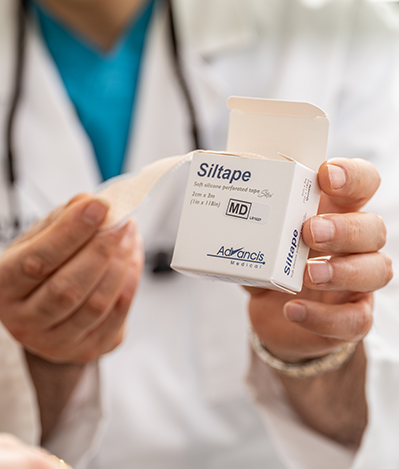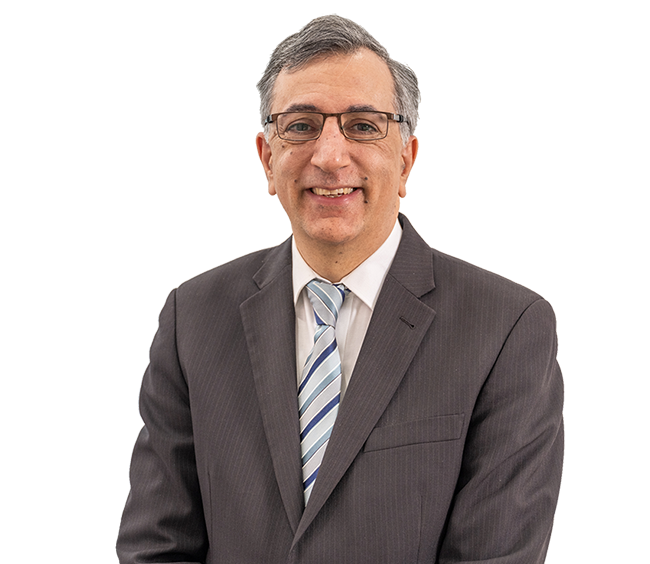Procedure Spotlight
- Hand conditions are an area of special interest to Dr Safvat
- De Quervain’s Tendonitis is characterised by pain at the base of the thumb and the thumb side of the wrist.
De Quervain’s Tendonitis is also known as ‘first dorsal compartment tendonitis’. The extensor tendons of the back of the hand go through six dorsal compartments to keep them in positions. The first compartment is for the first two tendons to the thumb. In De Quervain’s, these two tendons get restricted in their compartment and cause a characteristic pain at the base of the thumb and the thumb-side of the wrist. The pain is usually brought about by thumb and wrist movement, especially grasping or holding an object and making a fist.
The symptoms may progress gradually or acutely and may radiate down the thumb or up the forearm.

Technique
Originally, De Quervain tendinitis is treated non-surgically. This includes resting the thumb and the wrist with a splint, activity modification, oral anti-inflammatory medication and steroid injections around the tendons. These treatments help reduce the inflammation around the tendons and relieve the tendonitis for a variable period of time. In severe or recurrent cases and cases not responsive to non-surgical treatment, surgical release of the tendons is recommended.
Hand surgery is one of Dr André Safvat’s interests and areas of expertise. The principles of this operation are similar to a carpal tunnel release, but it is done at the back of the wrist to release the tight fibrous tissue around the tendons and make more room for the tendons to glide.
At Ethique Plastic Surgery, either in Sydney or the Southern Highlands rooms, Dr André Safvat can attend to your De Quervain’s tendinitis by finding either a surgical, or non-surgical management plan that suits your situation.

Recovery
The procedure is done as a day only procedure without the need to stay overnight in hospital. The hand and wrist are usually wrapped in a bandages and plaster splint and patients are discharged with a sling to elevate their hand.
The dressing needs to stay dry and intact for two weeks, after which Dr Safvat will remove it in his Ethique’s Bowral, Concod, or Miranda rooms. Patients will need hand therapy after this and Dr Safvat will organise this afterwards.
Patients will need to undergo hand therapy which Dr Safvat will organise to start around 1-2 weeks after surgery.

Preparation
It is best for patients to be in good general health prior to surgery. Dr Safvat also requests patients to stop smoking 3 weeks prior to the surgery.
Scars
There is no way to prevent scars completely after surgery and everyone can scar differently. However, the techniques Dr Safvat uses to suture his wounds and the placement of his scar are designed to minimise scarring. What’s more, any scarring will fade over time, especially if they are cared for correctly.
Dr Safvat will provide you with his specific protocol for scar management that will help you protect and care for your incisions in a way that will minimise scarring. Patients who have followed Dr Safvat’s protocol for scar management diligently have been very pleased with their progress in reducing and fading of scars.
Dr Safvat will provide you with his specific protocol for scar management that will help you protect and care for your incisions in a way that will minimise scarring.

Complications
While all care and diligence is taken by Dr Safvat to minimise or avoid complications, any surgical procedure can be associated with some general complications and/or specific complications related to the surgery you are having. Choosing a Specialist Plastic Surgeon such as Dr Safvat and having your procedure done in an accredited hospital minimises risks as does using an accredited Anaesthetist.
Some potential general surgical complications are:
- Infection that may require antibiotics (Dr Safvat prescribes all patients antibiotics after surgery to minimise this risk).
- Allergic reaction to dressings and other items used during the procedure.
- The formation of blood collection (haematoma) which could require additional surgery.
- Scars heal differently in different people. Some people are genetically prone to develop keloid scars. Hypertrophic scars develop when there is a complication in the healing process. Whilst not ideal, there is no threat to your health if you develop these.
- Anyone can have a heart attack or stroke from a clot. This risk is slightly increased with anaesthetics.
Some potential specific complications are:
- Persistence or recurrence of the symptoms. There are two tendons that go through the 1st dorsal extensor compartment. Rarely one of these tendons can have multiple strands and each strand my go through its own compartment separated by a fibrous band. All effort is taken to identify this and release all compartments. But if one is missed it may continue to provide symptoms and require re-release.
- Injury to the nerve supplying sensation to the back of the thumb and hand.(superficial branch of the radial nerve). All care is taken not to damage this nerve but as it travels over the ligament it is susceptible. to injury. If injured it requires exploration and repair.
- Subluxation of the tendons. The tendons can slip over the released ligament. Dr Safvat will advise you about what movement is allowed immediately after the surgery to prevent this as well as organise hand therapy to help.
Cost
De Quervain’s Tendonitis has an item number and patients should get a rebate from Medicare and their health fund (where applicable). The hospital costs are usually covered by private health funds depending on the patient’s level and type of coverage. Alternatively, you can have the procedure done in a Private Hospital as a Self-Funded patient. Detailed information regarding costs will be provided to you after your consultation.
Frequently asked questions
Once I have the surgery, will I require any further treatment?
Dr Safvat recommends patients that undergo De Quervain’s Tendonitis Release undergo hand therapy following their surgery. Dr Safvat will go through the recovery process in detail during the consultation and organise hand therapy for you.
How long before I can use my hand properly after the surgery?
Following DeQuervain’s release, you can expect discomfort, swelling, and stiffness. Most patients can return to light work within a few days, but it may take 6-8 weeks to return to more physical work.
Are there any alternatives to surgery?
It is recommended that non-surgical options are tried prior to any surgery being performed. These include resting the thumb and the wrist with a splint, activity modification, oral anti-inflammatory medication and steroid injections around the tendons. These treatments help reduce the inflammation around the tendons and relieve the tendonitis for a variable period of time. In severe or recurrent cases and cases not responsive to non-surgical treatment, surgical release of the tendons is recommended.
Dr André Safvat – Specialist Plastic Surgeon
Renowned for his dedication to his patients, his attention to detail and impeccable outcomes, Dr Safvat’s unparalleled expertise is reflected in the quality, professionalism and dedication of every member of our team.


